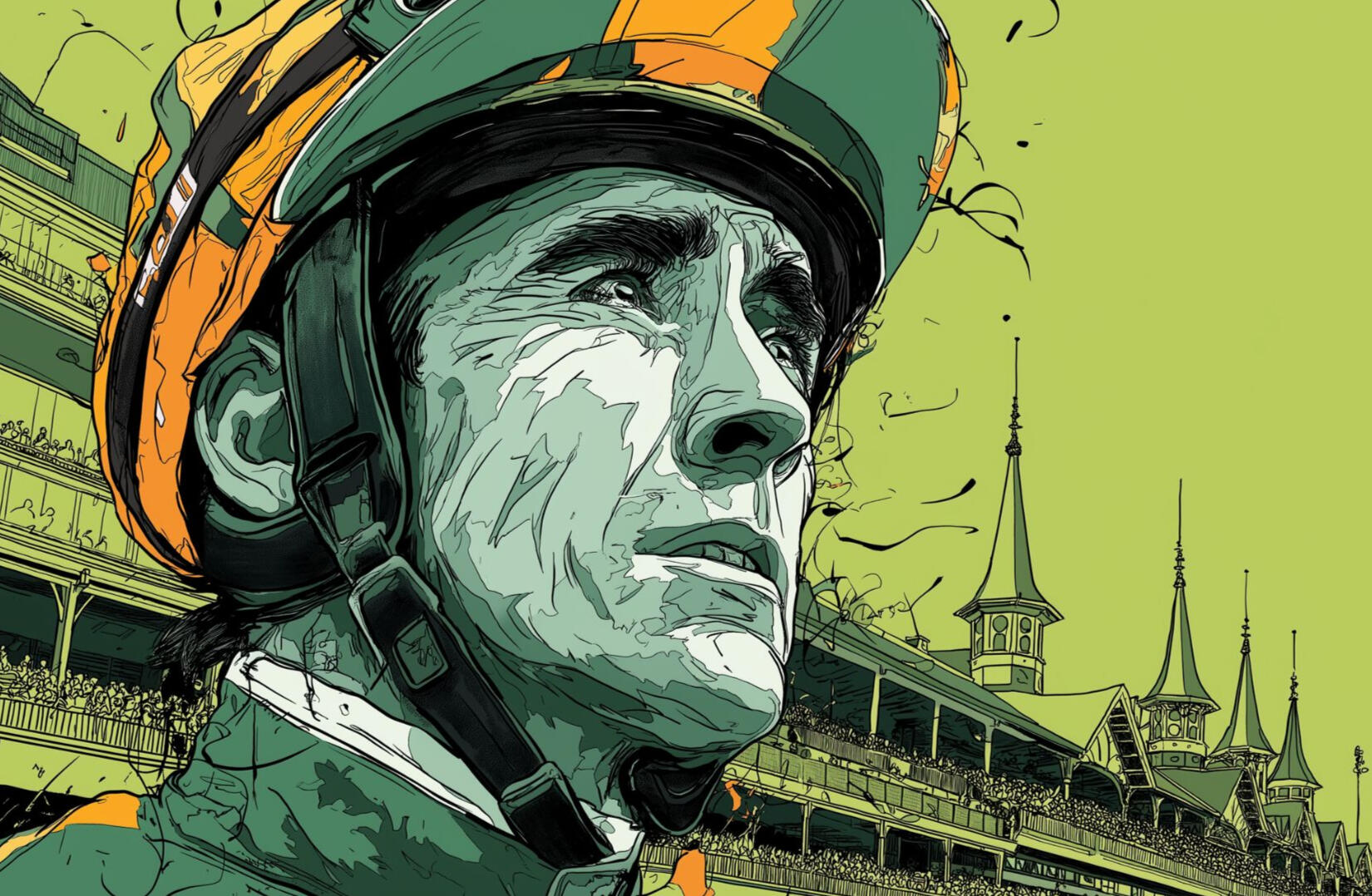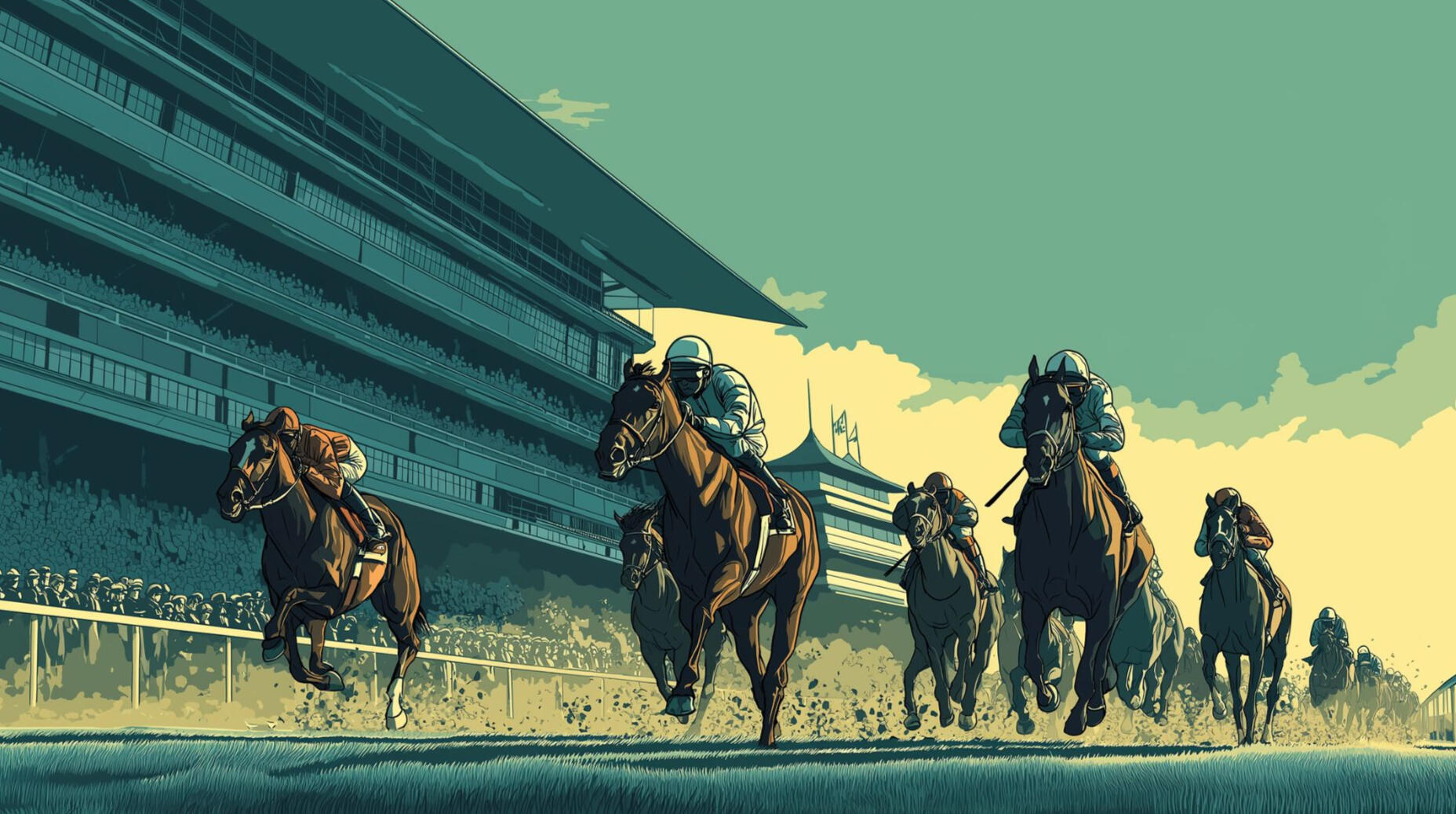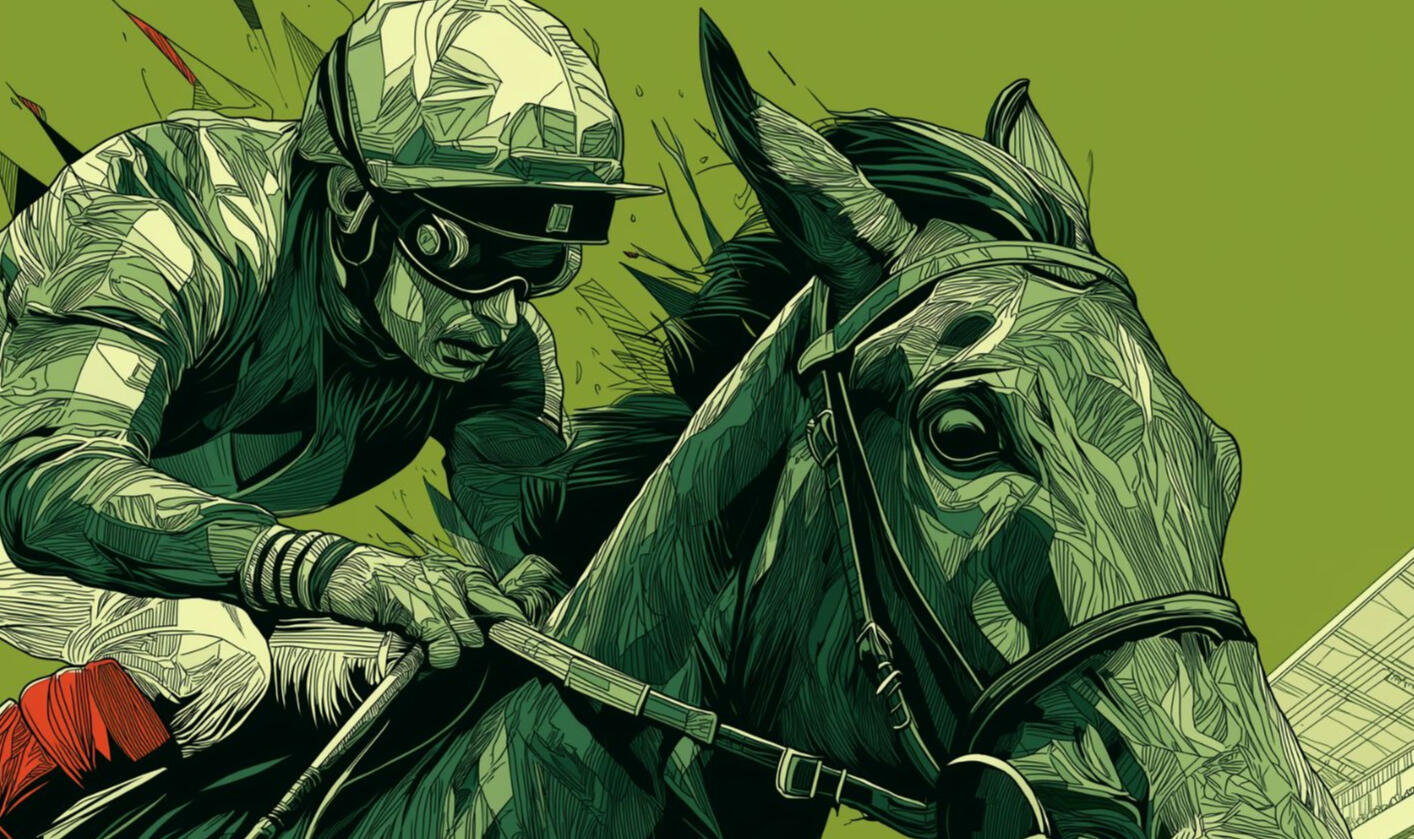From Newmarket to Kentucky
A Guide to Racehorse Ownership in the UK and US
HOW RACEHORSE OWNERSHIP DIFFERS ACROSS THE POND
Fancy calling yourself a racehorse owner? Whether it’s the thunder of hooves on Newmarket’s July Course or the roar of the crowd at Churchill Downs, owning a racehorse is a dream shared on both sides of the Atlantic.

UK vs USA
But while the thrill of seeing your horse cross the line in front is universal, the way you get there can be quite different in the UK and the US.In Britain, racehorse ownership often has a strong social side, and syndicates and racing clubs are a popular way for friends or like-minded fans to share the costs and enjoy the experience together.Across the pond, individual ownership is more common, and the scale of some US operations can be huge, with horses trained at private facilities and flown state to state like athletes.So, what does it actually take to become an owner in either country? This guide will walk you through the routes, the rules, and the rewards – from paddock to parade ring.
Racehorse Ownership in the UK
In the UK, there are several ways to own a racehorse, each with its own structure, costs, and level of involvement.The five main types are sole ownership, company ownership, partnership, syndicate, and racing club.Sole ownership is the most traditional form. Here, one person owns the horse outright, makes all decisions, and bears all costs and risks. This model offers the most control but is also the most expensive.Company ownership allows a registered company to own a horse. This can be used for promotional purposes or to share costs among company members. The company must appoint a registered agent to act on its behalf.Partnerships involve two to twenty individuals sharing ownership. Each partner is registered, and decisions are made collectively.This model allows for shared costs and responsibilities, making it more accessible than sole ownership.Syndicates are groups where members purchase shares, often managed by a syndicator.Syndicates have become increasingly popular because they make ownership affordable and spread the financial risk among many people.Members may or may not have a say in decisions, depending on the syndicate’s structure.Racing clubs offer the experience of ownership without actual legal rights to the horse. Members pay a subscription fee and enjoy benefits like stable visits and race day access, but the club manages the horse and makes all decisions.This is the most accessible and lowest-risk way to get involved, but members do not share in the horse’s value or have a say in its management.

The Process of Becoming an Owner
To become a racehorse owner in the UK, you must register with the British Horseracing Authority (BHA). The process involves choosing the type of ownership, registering your details, and, if you wish, designing your own racing silks.Owners are responsible for the costs of buying, training, and maintaining the horse, as well as entry fees for races and other expenses.The average yearly cost of owning a racehorse in the UK can range from £17,000 to £29,000, depending on the horse’s level and the type of racing.Owners can choose their trainer, visit the stables, and attend race meetings as part of the experience.Many describe the journey as rewarding, not just for the potential financial returns but for the friendships and memories made along the way.
Rise of Syndicates and Shared Ownership
Syndicates and shared ownership models have transformed the sport in recent years. Once the preserve of the wealthy, racehorse ownership is now accessible to a much wider audience.Syndicates allow ordinary fans to buy a small share in a horse, sometimes for as little as a few hundred pounds. Members share the costs and the excitement, and if the horse wins, they also share the prize money.Some syndicates are run by professional managers who handle all the administration, while others are informal groups of friends. The size of syndicates can vary from a handful of people to hundreds or even thousands, especially with the rise of micro-share models.These models have brought new energy and diversity to the sport, with many syndicate horses now competing and winning at the highest levels.
Financial Realities
While the dream of owning a champion is always present, it’s important to understand the financial realities. Most owners do not make a profit from racing; the costs of training, care, and entry fees often outweigh prize money, especially for horses running at lower levels.However, the potential for a big win, the enjoyment of the experience, and the chance to be part of the sport are the main motivations for most owners.Syndicates and clubs help manage expectations by clearly outlining the costs upfront and emphasizing the enjoyment over the investment potential.Some syndicates have achieved remarkable success, winning major races and significant prize money, but these are the exception rather than the rule.

How Racing Silks Are Devised
Racing silks, also known as racing colours, are the distinctive jackets and caps worn by jockeys to identify the owner of the horse.The tradition dates back over 275 years in Britain, when the Jockey Club made it mandatory for jockeys to wear identifying colours to help spectators and officials distinguish between horses during races.In the UK, owners must submit their proposed designs to the British Horseracing Authority for approval. The process ensures that no two sets of silks are the same.Patterns can include stripes, checks, spots, and more, while complex heraldic designs are reserved for those registered before 1970. Owners can incorporate personal symbols, initials, or family crests, making each set unique.The BHA provides an online tool for checking design availability and submitting applications. The design must be both practical and distinctive, with bright colours enhancing visibility on the track. Modern silks are usually made from lightweight polyester or satin, though traditional silk is still used by some owners for its prestige.In the US, the process is similar, with the Jockey Club maintaining a registry of designs. There are strict guidelines: the front and back must be identical, and there is a limit on the number of colours and patterns allowed. Each owner or stable must register their silks to ensure uniqueness across the sport.
Notable Racehorse Owners and Partnerships
The UK has a long history of successful and influential racehorse owners. Some of the most prolific include:J.P. McManus: With over 4,000 winners, including the Grand National and Cheltenham Gold Cup, McManus is one of the most successful owners in history.He has enjoyed more than 50 winners at the Cheltenham Festival and is known for his green and gold hoops silks.Trevor Hemmings: A businessman who owned more than 100 racehorses, Hemmings is remembered for three Grand National winners, tying the record for the most successful owner in the race’s history.John Magnier: The founder of the Coolmore breeding operation, Magnier has been behind many of the most famous winners in flat racing, including Galileo and Montjeu.Godolphin: The global racing operation owned by the Maktoum family of Dubai, Godolphin is a dominant force in both UK and international racing, with hundreds of winners each year.Rich Ricci: Known for his pink silks, Ricci has had many top-level winners, especially in National Hunt racing, and is a prominent figure at major festivals.Celebrity owners are also part of the scene, with figures like Sir Alex Ferguson, Harry Redknapp, and Michael Owen all enjoying success as owners.
Notable Partnerships and Syndicates
Partnerships and syndicates have become increasingly important in UK racing. Some of the most successful include:Highclere Thoroughbred Racing: Founded by Harry Herbert, Highclere has enjoyed major wins, including Harbinger’s victory in the King George VI and Queen Elizabeth Stakes, which brought significant prize money to its members.Middleham Park Racing: One of the most successful syndicates, Middleham Park has had over 1,000 winners, including Group 1 successes. Their model allows hundreds of people to share in the excitement of ownership.Royal Ascot Racing Club: This club famously owned Motivator, winner of the Epsom Derby in 2005, with 200 members sharing in the triumph.Elite Racing Club: Another well-known syndicate, Elite Racing Club, has produced top-level winners and offers affordable shares to members.

Syndicates of Ordinary Fans Achieving Big Wins
The rise of syndicates has allowed ordinary fans to experience the thrill of major race wins. Some notable examples include:Billesdon Brook: Owned by a syndicate, Billesdon Brook became the longest-priced winner in the history of the QIPCO 1000 Guineas, winning at 66-1 and delivering a life-changing moment for her owners.Put The Kettle On: Owned by the One for Luck syndicate, this horse won the 2020 Arkle Novice Chase and the 2021 Champion Chase at Cheltenham, showing that syndicate horses can compete at the very highest level.Cachet: Highclere’s Cachet won the QIPCO 1000 Guineas at Newmarket, another example of syndicate success in a classic race.These stories highlight how syndicates have opened the sport to a broader audience, allowing fans to experience the highs of ownership without the prohibitive costs.
Racehorse Ownership in the United States
The US shares many similarities with the UK in terms of ownership models, but there are some notable differences. The main types are sole ownership, partnerships, syndicates, and racing clubs. However, the US has seen a significant rise in micro-share models, where fans can buy a very small stake in a horse for as little as $35.Sole ownership and partnerships are common, with partnerships often involving two or more people sharing the costs and rewards. Syndicates and racing clubs operate in much the same way as in the UK, but the scale can be larger, with some syndicates involving thousands of members.The Process and CostsTo own a racehorse in the US, individuals must obtain an owner’s license from the relevant state racing commission. The process includes background checks and paperwork.Owners are responsible for all costs, including training, care, and entry fees. The costs can be significant, but the rise of partnerships and micro-shares has made ownership more accessible.The US has also seen a boom in partnerships and micro-share models. Companies like MyRacehorse have made it possible for thousands of people to own a share in a top-level racehorse.MyRacehorse famously offered micro-shares in Authentic, the 2020 Kentucky Derby and Breeders’ Cup Classic winner, with over 5,000 people sharing in the victory.Other successful partnerships include Dogwood Stable, Team Valor, Eclipse Thoroughbred Partners, West Point Thoroughbreds, and Starlight Racing. These groups have won major races, including the Kentucky Derby, Belmont Stakes, and Breeders’ Cup events.Notable Differences Between the UK and the USWhile the UK and US share many similarities in racehorse ownership, there are some key differences:Regulation and Registration: In the UK, the BHA oversees all ownership registrations and the design of racing silks. In the US, each state has its own racing commission, and the Jockey Club manages the registry of silks.Micro-Share Models: The US has embraced micro-share ownership more rapidly, with companies like MyRacehorse allowing thousands of people to own a share in a top-level horse for a very low cost. The UK is catching up, but the scale is larger in the US.Scale of Syndicates: Syndicates in the US can involve thousands of members, while UK syndicates are often smaller, though this is changing with the rise of companies like Middleham Park Racing and Highclere.Prize Money and Costs: Prize money in the US is generally higher, especially at the top level, but the costs of ownership can also be greater. The structure of racing, with more graded stakes and a focus on major events, shapes the ownership experience.Cultural Traditions: The UK has a longer tradition of racing silks and a more centralized system for their design and registration. The US system is more fragmented, with each state having its own rules, but the principle of unique, registered silks is the same.More Accessible, Diverse, And Exciting Than EverRacehorse ownership in the UK and US has evolved to become more accessible, diverse, and exciting than ever before. Whether through sole ownership, partnerships, syndicates, or micro-shares, fans can now experience the thrill of the sport from the inside.The process of designing racing silks adds a personal and historical touch, while the stories of both famous and everyday owners show that anyone can dream of success on the racecourse.Syndicates and partnerships have opened the doors to major race wins for ordinary fans, proving that the sport is no longer just for the wealthy elite.As the models of ownership continue to evolve, the sense of community, excitement, and tradition remains at the heart of the experience, making racehorse ownership one of the most rewarding ways to be part of the world of horse racing.
© All rights reserved.